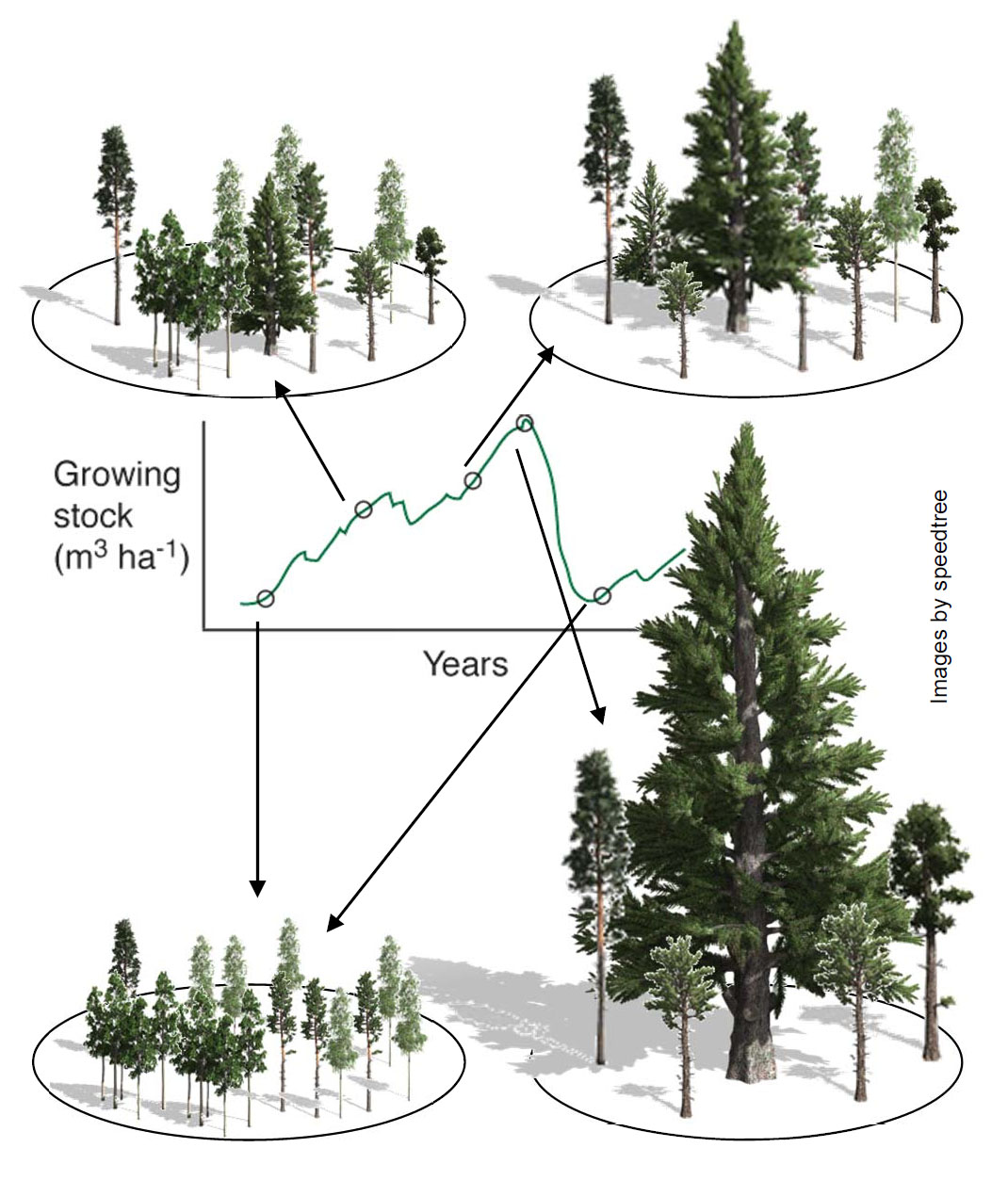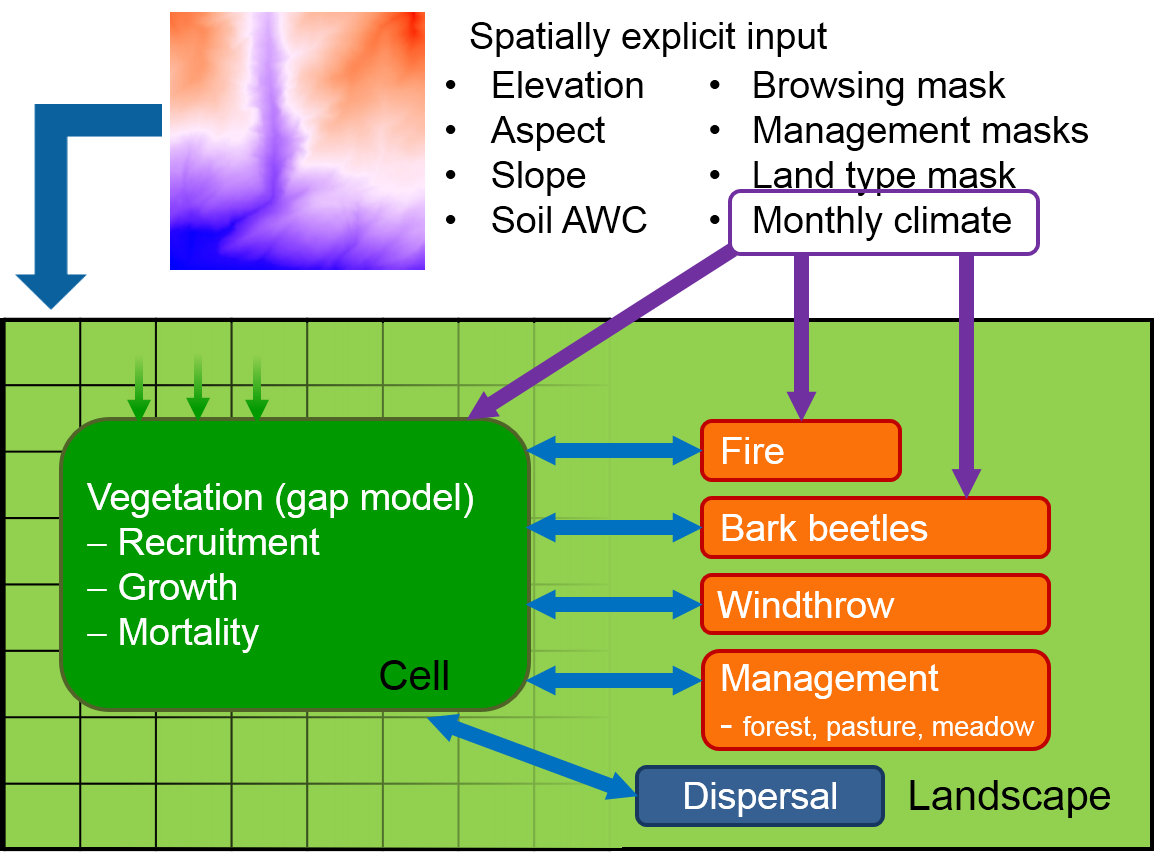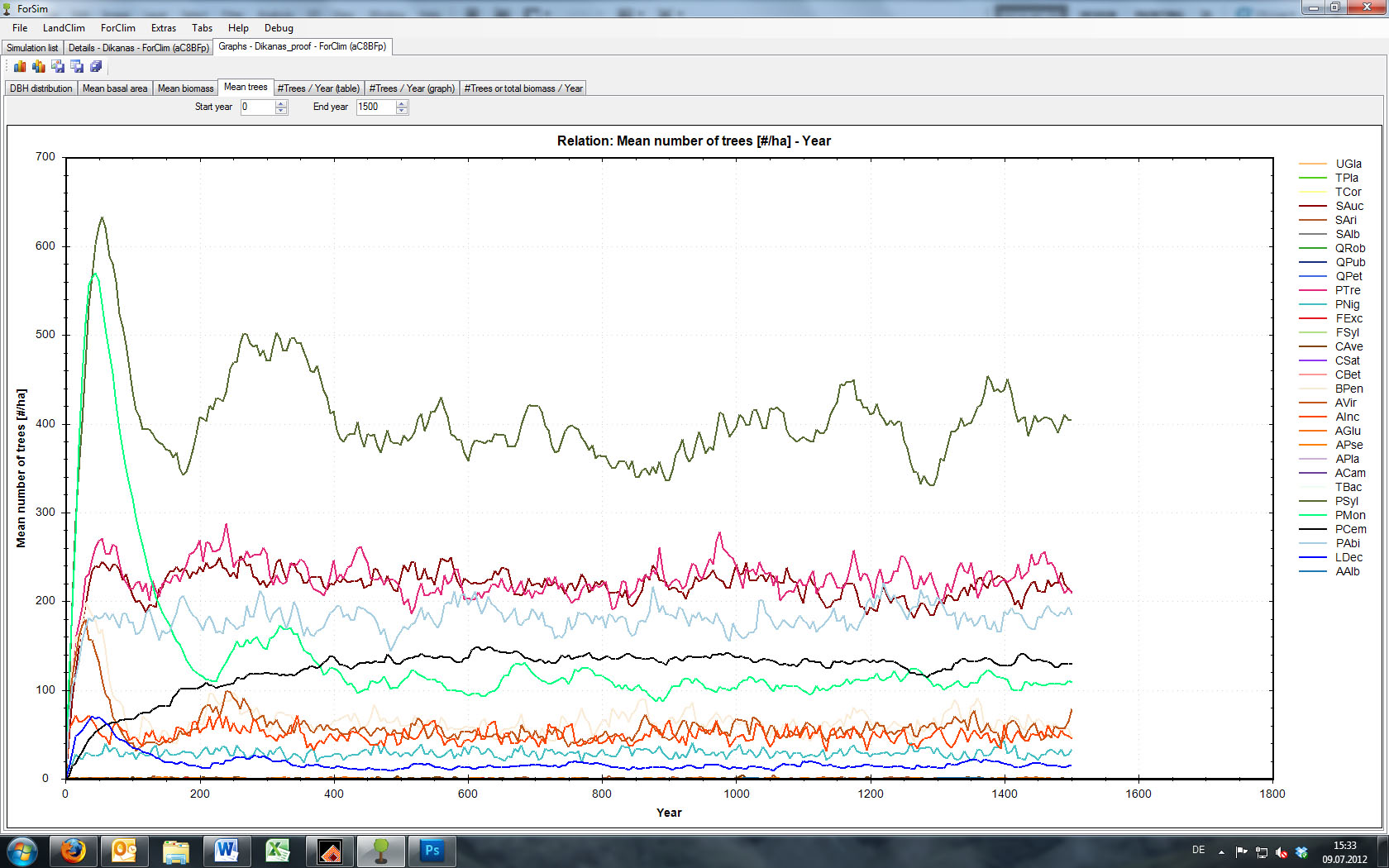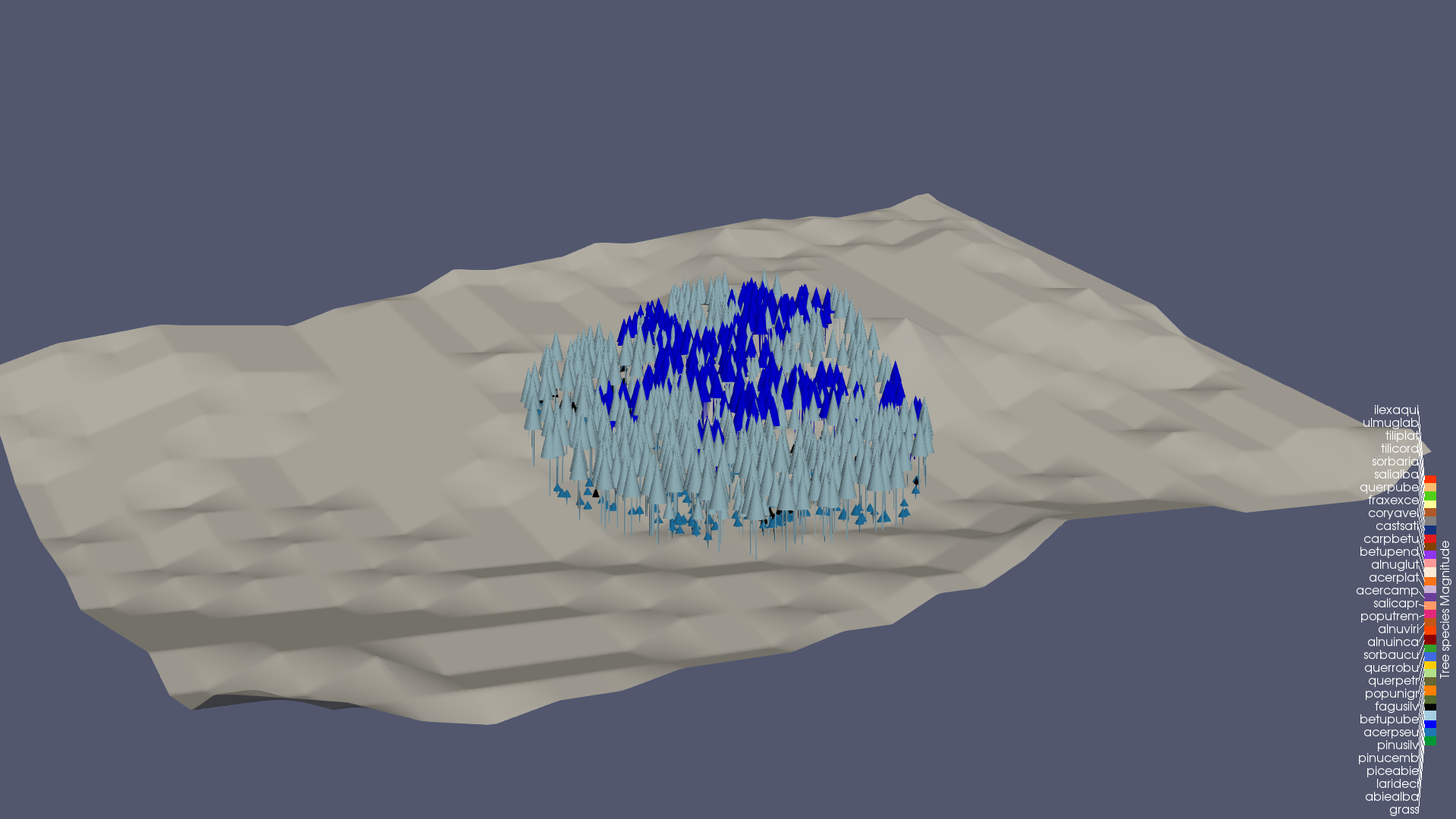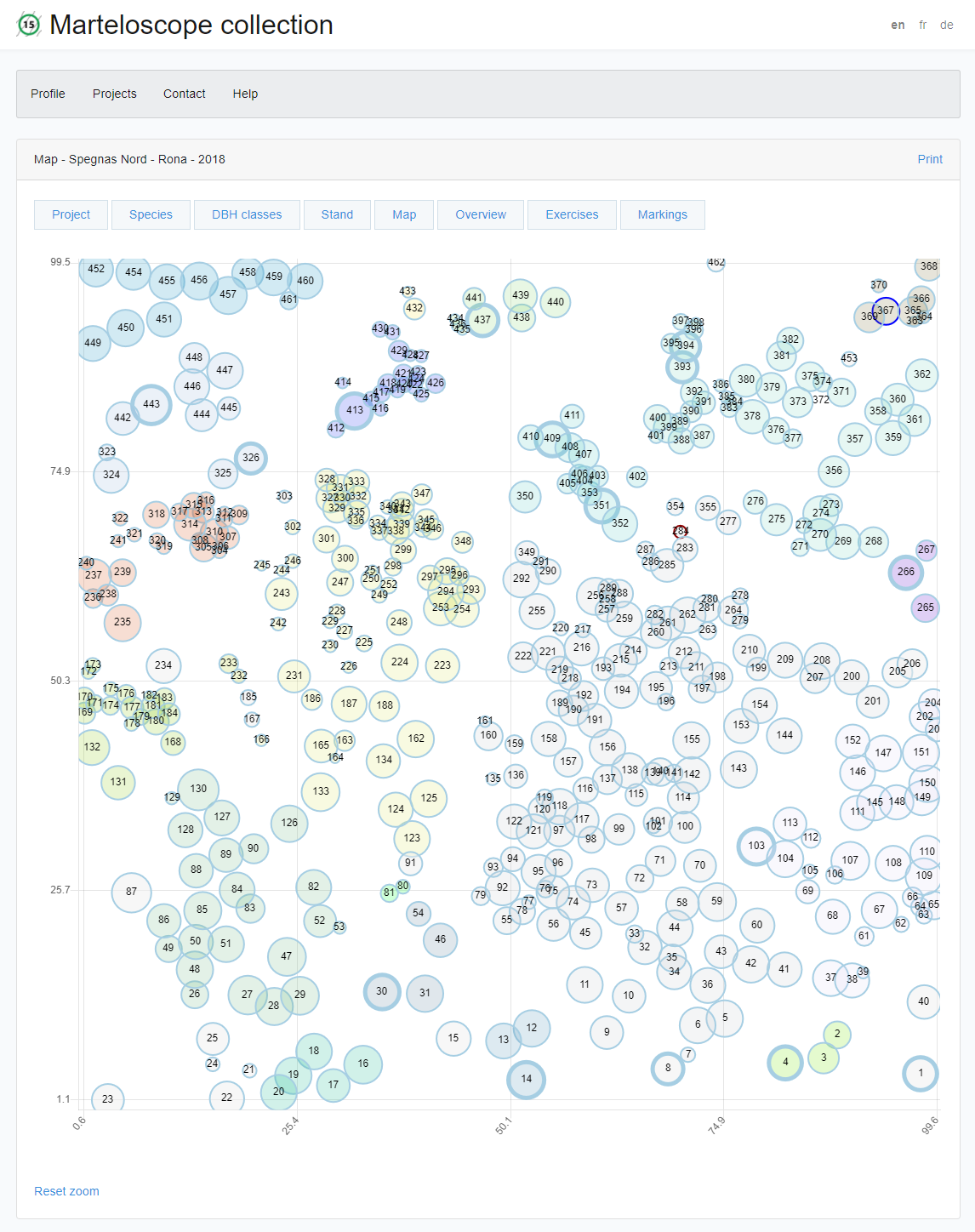FORCLIM is a climate-sensitive forest succession (“gap”) model, developed to simulate forest stand dynamics over a wide range of environmental conditions.
FORCLIM is currently parameterized for ca. 180 tree species dominant of temperate forests worldwide. The model has been tested comprehensively for the representation of natural forest dynamics of temperate forests of the Northern Hemisphere, with an emphasis on European forests . For example, FORCLIM results match time series data from growth-and-yield plots over 80-100 years remarkably well (Rasche et al. 2011), and it can also be used under scenarios of anthropogenic climate change (Didion, Kupferschmid Albisetti et al. 2011).
Read moreLandClim is a stochastic process-based model designed to study spatially explicit forest dynamics at the landscape scale over long time periods with a fine spatial resolution.
The model is a descendant of the raster-based LANDIS model (Mladenoff, 2004) with an improved tree growth and succession sub-model. The tree growth (‘stand scale’) processes are based on a simplified version of the forest gap model FORCLIM (Bugmann, 1994), in order to maintain computational efficiency at the larger scale. The model has been used to predict historic (Colombaroli et al., 2010, Henne et al., 2011), current (Schumacher et al., 2004) and future forest dynamics (Elkin et al., 2013, Temperli et al., 2013) in various parts of the world such as Central Europe (Briner et al., 2013), USA (Schumacher et al., 2006) or New Zealand (Thrippleton et al., 2014).
Read moreLandClim Visualization Converter is a tool to convert output files of the LandClim model to input files for the Tree Visualization tool.
Read moreA web application to manage, maintain and analyze a Marteloskop.
With the additional Mobile App for iOS, Android and Windows 10 you can easily fill-in exercises created in the Web App and submit your results back to the web, where the supervisor can analyze them.
Go to the Web App